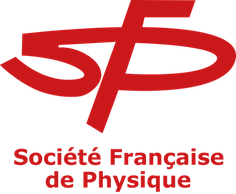Orateur
Description
Simulation of nova explosive nucleosynthesis at the white-dwarf surface predicts the production of the radionuclide $^{22}$Na. It has an interesting half life of 2.6 yr, making it a potential astronomical observable by allowing space time correlation with the astrophysical object. $^{22}$Na should provide constraints on nova models, but its gamma-ray line 1.275 MeV has not been observed yet. Within nova temperature range, the main destruction reaction $^{22}$Na(p,$\gamma$)$^{23}$Mg is dominated by a resonance at 0.213 MeV corresponding to $^{23}$Mg excited level 7.786 MeV, as it will be shown here. There is however a disagreement among the measured strengths of this resonance. An experiment was performed at GANIL facility to measure the lifetime of 7.786 MeV level with a resolution expected at 1 fs (known upper limit 12 fs). The experiment will be presented. With a beam energy of 4.6MeV/u, the neutron transfer reaction $^{3}$He($^{24}$Mg,$\alpha$)$^{23}$Mg$^*$ at state of interest was tagged with particle detectors (VAMOS++ spectrometer, SPIDER silicon dE-E)and gamma tracking spectrometer AGATA. The resolution of order 1 fs is possible with Doppler Shift Attenuation Method DSAM, meaning an analysis of Doppler shifted attenuated lineshapes of measured gamma peaks. The experiment will also allow an evaluation of the branching ratio for proton decay of $^{23}$Mg interesting state. In fine, $^{22}$Na(p,$\gamma$)$^{23}$Mg resonance strength $\omega \gamma$ will be obtained with higher precision. Predictions of the impact of this resonance on $^{22}$Na abundance in nova ejecta will be presented.
Preliminary results of the experiment analysis will be presented. Produced light particles have been identified within SPIDER data as well as gamma Doppler shifted rays from $^{23}$Mg excited states. Preliminary constrains thanks to $\alpha$ coincidence seen by VAMOS have allowed to improve gamma spectra. Velocity of $^{23}$Mg ions has been estimated with a Doppler correction method presented here. A first estimation of the known lifetime of $^{23}$Mg at 2.052 MeV has been derived through DSAM with a preliminary Monte Carlo simulation of the experiment.

